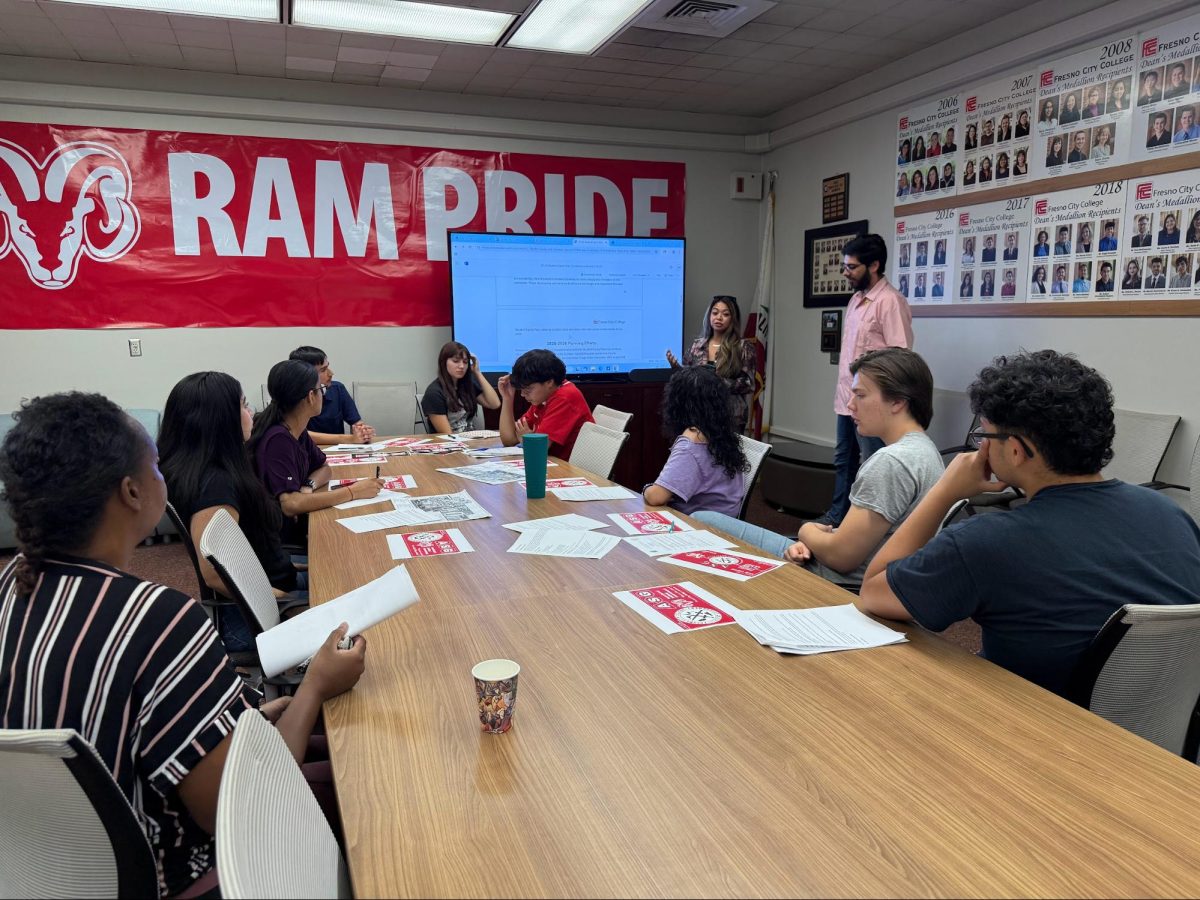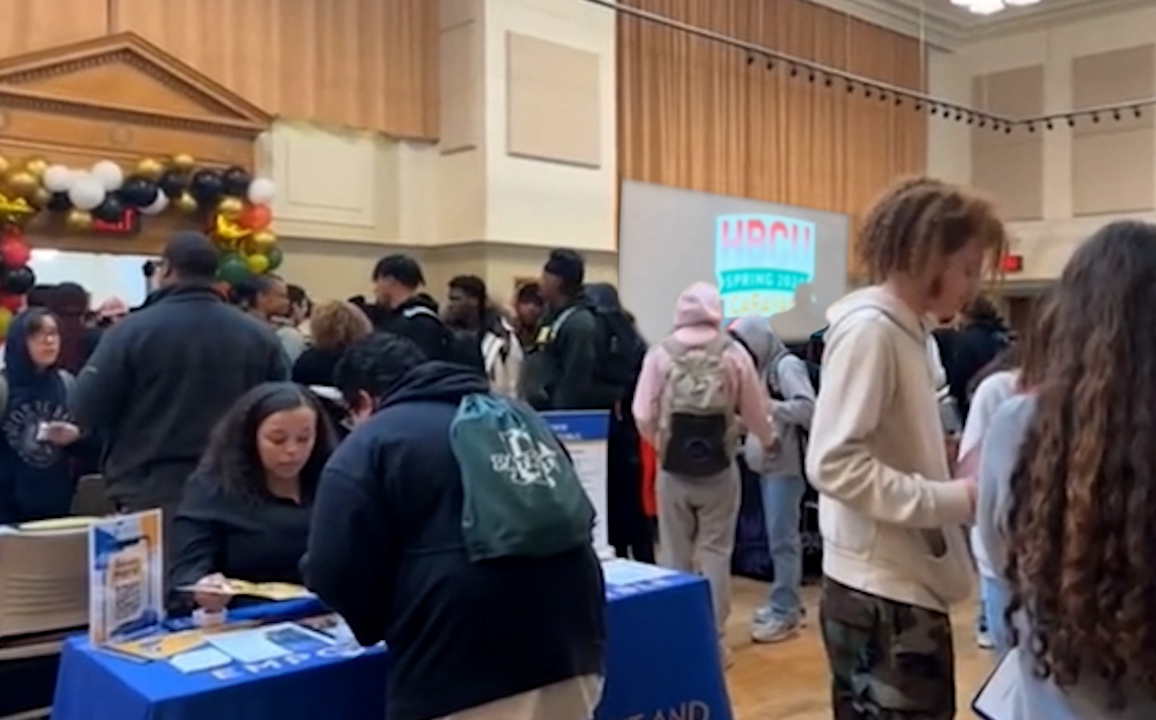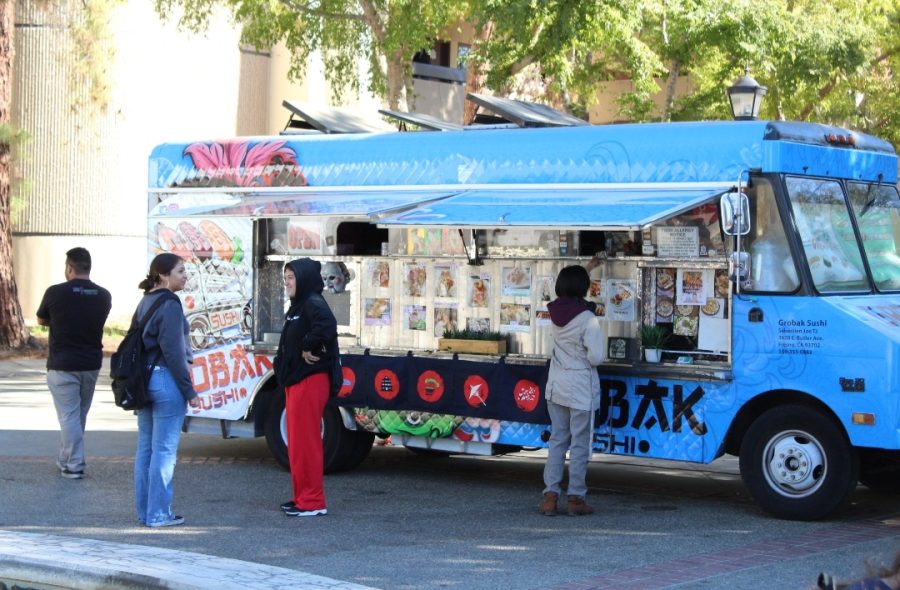“Restless” was the word that came to Franz Weinschenk as he remembered the 60s at FCC.
The era bore an unearthing of tolerance and acceptance in a society that was in the wake of a dramatic and historical change for generations to come. These changes would be reflected on the FCC campus as well as nationwide.
“I crossed my fingers every morning during the 60’s before I came to school,” Weinschenk said, “If I managed to ‘mettle through’ the day, I know I succeeded.”
“The 60s began with great chaos,” said Weinschenk. “Over 56,000 Americans were killed in the war, making it the longest and bloodiest in U.S. history. Because of this, students were solicited for drafts- and it was this that really got them triggered up.”
Vietnam was a different kind of war. The national unrest caused students to split: those that were pro-war and anti-war. At the other end of society, civil rights were on the doorstep of the American threshold.
“The two main problems during the 60s on this campus and around the nation were that people were trying to deal with two sore subjects simultaneously,” Weinschenk said. “There were those that had strong feelings about the war, and then there were those who were advocating for civil rights – this created a real jungle.”
For Weinschenk, civil rights were important for the evolvution of society. During this time, schools were too segregated and minority groups were continuously treated like inferiors compared to the rest of society. He recalls a comment made by a student in one of his classes, “You know, I have never had a teacher of my race.”
Students began forming alliances and advocating for the changes they sought to make on a divided campus.
“I think it was a conflicting matter for the faculty of color,” Weinschenk said, “because they were torn between disciplining the minority student-protestors (while in fear of losing their job), but were also wanting to be a part of the great movement.”
The college president would listen to the yells and shouts of students: their complaints, annoyances, and any other disturbance that took hostage of their feelings.
Other colleges took a more “law and order” approach to the demonstrations that were taking place on their campuses, which often lead to turmoil and outrageous conduct.
FCC was different. It listened to its students. It didn’t offer solutions, but it maintained its open-door policy to encourage students to vent their frustrations. “The president of the school at that time was deliberate. He was patient and understanding.” Weinschenk said.
It was during this time that minorities were underrepresented in schools with Latinos making up 20 percent of the student population at FCC. African-Americans represented 7 percent.
“Students thought that they should have teachers and classes that could reflect their culture,” said Weinschenk. “Ethnic minorities on this campus really fought for ethnic and cultural studies.”
In the beginning, conservatives shunned the idea of changing the FCC curriculum to include anything out of the ordinary. They wanted to continue using the standard and set guideline for teaching.
They felt that taxpayer dollars should be spent on educating students what they “ought” to have been learning. Some went as far as to state that there was only “one history”- and that was American history so anything else should be denied.
“I was always for changing the curriculum here [FCC] because [I} knew that it would help people understand the history of these groups and would help with integrating the students to get along better.”
Weinschenk said that he cannot recall any major fights or incidents that were a direct result of the civil rights or anti/pro war movements occurring on campus, “but, there were bomb threats” he said.
On an average day, FCC would get three to four bomb threats; so much to the point that the fire department refused to check the school because their visits were too frequent and false.
At one point, the professors at FCC were the “bomb squad” checking all he buildings for any potential harm.
Most of the movement caused many students to take serious matters into their own hands.
They would “go crazy” leaf-letting in the unofficial free speech area. Every day had a new speaker spouting his beliefs and opinions both about the war and the rights of minorities.
“It seemed that during this time, students and people took things too personal,” Weinschenk said. “You couldn’t be in front of English class reading a composition because someone would be offended”.
Moreover, the strong feelings those students felt were often written and submitted for publication in the FCC newspaper. FCC’s newspaper became the focal point for problems.
Students would write stories and if they appeared to be slanted or if people were able to gather “any sort of meaning between the lines,” it would lead to more trouble.
As Dean of the Humanities division, Weinschenk said that students were “opinionated, emotional, and hard to negotiate with.” He would listen to the students and their needs. The push for ethnic studies was strong.
It was soon added to the curriculum, with 2 classes being offered at FCC. This paved the way for other minority groups to establish their curriculums including American-sign language and Women Studies, which were added to the social science divisions.
“The struggle was difficult,” said Weinschenk. “Because all the other divisions on this campus didn’t want them.” Groups on campus began to form including La Raza and the Black Student Union.
For the most part, FCC was a divided campus with strong advocates on either side concerning both issues. It was never a serious threat to come to school, but the real problem was when the students would go home and watch TV and hear both issues mix – one supporting or attacking the other” Weinschenk said.
“But students would come back to school and be very focused on U.S. policy. They were very interested in politics, very aware of their environment and surroundings, and help their opinions to such high esteem.”
If a student put in a request for a room on campus and the room was occupied for longer than the expected time frame, the students would be outraged. They would always come close to “crossing the line” to get their points across, but never did.
In regards to the war, the students were always upset that ROTC members, eager to draft students for the war if they failed to be full time students, monitored the attendance office. Many protests were held on the free speech area discussing the anti-war sentiment. The speeches, poems, and demonstrations often attracted local media stations and photographers.
“I think the biggest problem for students was that they were being drafted against their will” Weinschenk said. “Most did serve their duty when they were drafted, but I know of some that would burn their draft card only to end up in jail, and others fled to Canada. Many fled to Canada.”
Once a gentleman went below 12 units, he was subject to the draft. Sometimes they were drafted based on their hometowns, which became a disadvantage to them because their chances of being drafted were greater. Hence, young men from little towns like Selma were more than likely to be drafted than someone from Fresno.
Out of the 7,000 students at FCC, half were women and half were men- most of which served in the Vietnam War.
Out of the two issues that had FCC in frenzy, civil rights seemed to impact students more.
“It was a serious case of going home at night and seeing people getting hit by a baton, or dogs, or a shooting, and seeing dead bodies coming home week after week. It was mentally exhausting.” said Weinschenk.
Categories:
Franz Weinschenk takes The Rampage through…
Story By: Cynthia Moreno
February 26, 2008
0
More to Discover



